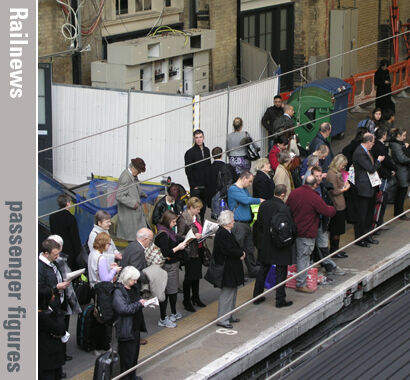The recovery of the passenger rail business is continuing in the wake of the Covid pandemic, according to new figures released by the Office of Rail and Road. But the proportion of journeys made by commuters is still declining.
Annual revenue has topped £10 billion for the first time since 2019, and totalled £10.3 billion in the year to 31 March 2024. This was a 13 per cent increase if compared with the £9.1 billion in the previous year, when adjusted for inflation. In the last year before Covid, 2019-2020, revenue from passenger services was £10.4 billion.
The number of people travelling by train and the distances they covered have also continued to rise.
A total of 1.61 billion journeys were made between1 April 2023 and 31 March this year, which was an increase of 16 per cent compared with the previous year, although the total in 2019-20 was 1.74 billion. This was the highest figure recorded since the 1920s, although there is an element of statistical inflation because modern journey totals count each train used during a trip, and cannot take account of split ticketing.
Passenger kilometres were also up, at 60.1 billion. This was a 13 per cent increase on the 53.0 billion in 2022-23, but still below the 66.7 billion kilometres travelled in 2019-2020.
The earliest equivalent figure available in historical records is for 1934, when it was approximately 34 billion kilometres. Until modern times the highest totals were recorded during the Second World War. The peak of 56.7 billion kilometres was recorded in 1945, when many thousands of demobbed troops were travelling home.
Meanwhile, the number of commuters is still falling. The proportion of journeys made using season tickets is down from 34 per cent in 2019-20 to 13 per cent in 2023-24, and this was two percentage points lower than in 2022-23. Commuters now account for fewer than one in eight passengers, compared with one in three before the pandemic.


